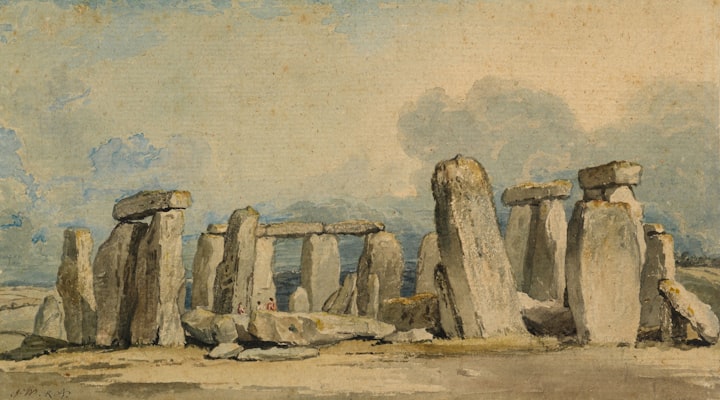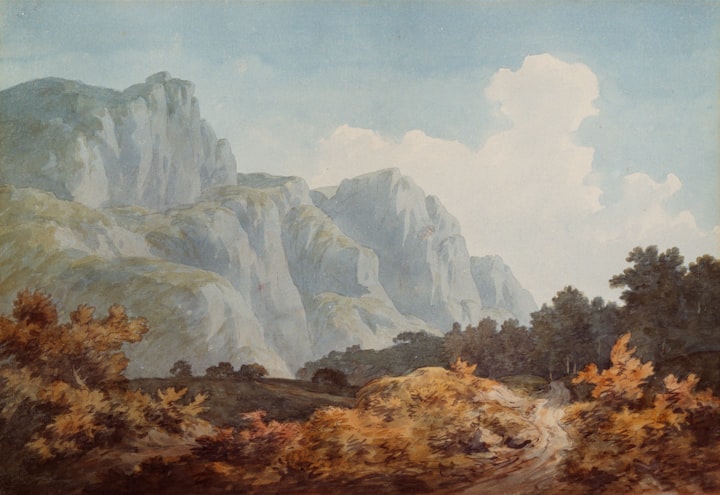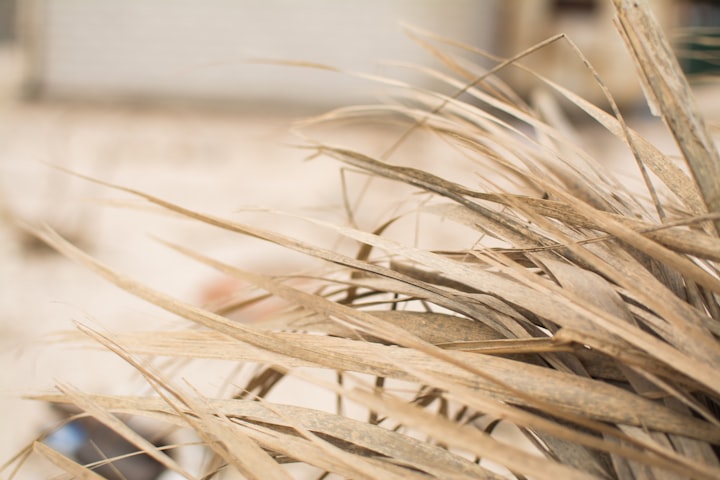The Power of Art to Heal and Inspire
Power of Art

The Power of Art to Heal and Inspire
Art has the power to heal and inspire people in ways that are hard to describe. It can evoke a range of emotions and help us connect with our deepest thoughts and feelings. From music to painting, sculpture to dance, the benefits of art are countless. For centuries, art has been used as a form of therapy to help people overcome trauma, cope with stress, and manage mental health disorders. Art is also a powerful tool for inspiring creativity, self-expression, and personal growth. In this post, we will explore the healing and inspiring power of art, and how it can help us navigate the challenges of everyday life. Whether you're an artist, a therapist, or simply someone who loves to create, this post will give you a deeper understanding of the transformative power of art.
1. The therapeutic effects of art
Art has long been used as a form of therapy to help individuals express and process their emotions. The therapeutic effects of art can be seen across a variety of settings, from hospitals and mental health clinics to schools and community centers. Art therapy has been found to be effective in helping people cope with a range of mental health issues such as depression, anxiety, and PTSD.
Through the use of various art forms, such as painting, drawing, and sculpture, individuals can externalize their emotions and gain a deeper understanding of their internal experiences. Art therapy provides a safe and non-judgmental space for individuals to explore their emotions, thoughts, and experiences. This can be particularly beneficial for those who may struggle to communicate their feelings through words alone.
In addition to its therapeutic benefits, art can also inspire and motivate individuals. Engaging in the creative process can promote a sense of achievement and self-worth, and can help individuals tap into their inner creativity and problem-solving skills. Through art, individuals may also gain a new perspective on their experiences and the world around them, leading to personal growth and increased self-awareness.
Overall, the power of art to heal and inspire is undeniable. Whether used as a form of therapy or simply as a creative outlet, art has the ability to positively impact individuals' mental health and well-being.
2. How art can help to relieve stress and anxiety
Art has been known to have a calming and soothing effect on individuals. In today's fast-paced world, stress and anxiety have become an inevitable part of our lives. Art can become a great tool to relieve stress and anxiety. The process of creating art can help individuals to take their mind off of their worries and be present in the moment. It can help reduce cortisol, the hormone associated with stress, and increase dopamine, the hormone associated with pleasure and reward, which can improve mood and overall well-being.
In addition, viewing art can also have a therapeutic effect. Research has shown that looking at art can reduce anxiety levels, improve mood, and promote relaxation. Art can transport individuals to another world, allowing them to escape their problems and focus on something beautiful and inspiring.
Art therapy has also become a popular form of treatment for individuals struggling with mental health issues. It is a form of therapy that uses creative processes such as painting, drawing, and sculpting to help individuals process their emotions and work through their challenges. Art therapy has been shown to be effective in reducing symptoms of anxiety, depression, and PTSD.
In conclusion, art has the power to heal and inspire. Whether it's creating art or simply viewing it, art can have a positive impact on mental health and well-being. Incorporating art into our daily lives can be a simple yet effective way to manage stress and anxiety, and promote overall wellness.
3. The role of art therapy in mental health treatment
Art therapy has become increasingly popular in recent years as a complementary treatment for mental health conditions. It's a form of therapy where patients express themselves through art, whether it's painting, drawing, or sculpting. The therapy is facilitated by a trained art therapist who helps the patient use their creations as a means of communication and self-expression.
Art therapy can be particularly helpful for patients who find it difficult to express their emotions verbally or who struggle with traditional talk therapy. Through the creation of art, patients can explore their feelings and emotions in a safe and non-judgmental environment.
Studies have shown that art therapy can be effective in treating a range of mental health conditions including depression, anxiety, PTSD, and addiction. It can also be helpful for patients dealing with physical illnesses such as cancer, helping them cope with the emotional toll of their condition.
Art therapy can be done in both individual and group settings. In a group setting, patients can benefit from the social support of others going through similar experiences. It can be a powerful tool for building connections and reducing feelings of isolation.
Overall, art therapy offers a unique way for patients to explore their emotions and work towards healing. It can be a valuable addition to a comprehensive mental health treatment plan.
4. The benefits of creating art for physical health
Creating art can provide many benefits for physical health. In fact, studies have shown that engaging in creative activities can improve overall wellbeing and promote healing.
Firstly, creating art can help reduce stress and anxiety levels. When you're focused on creating something, your mind is taken away from daily worries and problems. This can lead to a decrease in cortisol levels, which is a hormone that is associated with stress and anxiety.
Additionally, creating art can help improve motor skills and hand-eye coordination. Whether it's painting, drawing, or sculpting, all of these activities require a certain level of manual dexterity, which can help improve fine motor skills and even reduce the risk of developing conditions such as arthritis.
Furthermore, creating art can help improve cognitive function. Studies have shown that engaging in creative activities can help improve memory retention, problem-solving skills, and even increase brain function.
Finally, creating art can also have a positive impact on physical recovery. For individuals who have experienced physical trauma or are recovering from surgery, engaging in creative activities can provide a therapeutic outlet for emotional and physical pain.
Overall, there are many benefits to creating art for physical health. Whether you're looking to reduce stress levels or improve cognitive function, incorporating art into your daily routine can provide a multitude of benefits.
5. How art can help us to connect with ourselves and others
Art is a powerful tool that can help us to connect with ourselves and others in many ways. When we engage with art, it can evoke emotions, memories, and thoughts that we may not have been aware of before. This introspection can help us connect with ourselves on a deeper level and improve our overall well-being.
Art can also help us to connect with others by providing a platform for communication and understanding. When we view art, we are exposed to different perspectives and ways of thinking that can expand our own worldview. By discussing art with others, we can learn from their experiences and build connections through shared understanding.
Art therapy is a commonly used technique for helping people to connect with their emotions and improve their mental health. It involves using different art forms, such as painting, drawing, and sculpting, to help individuals express themselves and work through their emotions. Art therapy has been shown to be effective in treating a range of mental health conditions, such as depression, anxiety, and PTSD.
In addition to its therapeutic benefits, art can also inspire us to take action and make positive changes in our lives. Art can be a powerful tool for social change, as it can raise awareness of important issues and inspire people to take action. By connecting with ourselves and others through art, we can create a more compassionate and understanding world.
6. The inspiration of art on creativity
Art has always been an inspiration for creativity. It has the ability to evoke emotions, thoughts, and ideas that can spark creativity in individuals. Whether it's through paintings, sculptures, or even street murals, art has a way of inspiring people to think outside the box and come up with new and innovative ideas.
Artists themselves are known for their creativity and their ability to transform their emotions and experiences into art. They see the world in a unique way and this is often reflected in their work. When we view their creations, we are exposed to new perspectives and ideas that we may not have considered before.
Incorporating art into your workspace can be a great way to inspire creativity in your employees. Studies have shown that employees who are surrounded by art are more creative, productive, and engaged at work. Additionally, art can help reduce stress and improve overall well-being, which can contribute to a more positive work environment.
Art can also be used as a tool for brainstorming and problem-solving. By looking at a piece of art, we can approach a problem from a different angle and come up with unique solutions that we may not have thought of otherwise.
In conclusion, the inspiration of art on creativity is undeniable. It has the power to transform our perspectives, inspire new ideas, and contribute to a more productive and positive work environment. Incorporating art into your life and workplace can be a great way to tap into your creativity and unlock your full potential.
7. How to get started with creating art for healing and inspiration
Creating art for healing and inspiration can seem intimidating for someone who is not familiar with the practice. However, it is a fulfilling and therapeutic experience that can be done by anyone regardless of their artistic background.
The first step to getting started is to determine the type of art that speaks to you. It could be painting, drawing, sculpting, or even digital art. Once you have identified your preferred medium, invest in some basic art supplies and find a space in your home where you can create without distractions.
It's also important to set an intention before you begin creating. This could be to release stress, process emotions, or to simply let your imagination run wild. It's a good practice to write down your intention and refer to it when you feel overwhelmed or stuck during the creative process.
Another helpful tip is to practice mindfulness while creating. This involves being fully present in the moment, focusing on your breath, and letting your thoughts pass without judgment. This helps to reduce stress and increase creativity.
Lastly, don't be afraid to experiment and make mistakes. The beauty of art is that there are no rules, and every mistake can be turned into an opportunity to learn and grow. Allow yourself to be vulnerable and express yourself freely through your art. With time and practice, you will find that creating art for healing and inspiration becomes a natural part of your self-care routine.
8. Different types of art for inspiration and healing
Art can be a powerful tool for healing and inspiration. Different types of art can evoke different emotions and can be used for various purposes. Here are some examples of different types of art that can be used for inspiration and healing:
1. Painting: Painting is one of the most popular forms of art that can be used for healing and inspiration. It allows the artist to express their emotions and feelings through the use of color, texture, and composition.
2. Music: Music is another form of art that can be incredibly healing and inspiring. It has the power to calm the mind, lift the mood, and even transport the listener to a different place and time.
3. Dance: Dance is a form of art that can be used to express emotions, connect with others, and promote healing. Whether it's a traditional dance form or a modern interpretation, dance can be a powerful tool for healing and inspiration.
4. Poetry: Poetry is a form of art that uses language to create a powerful emotional response. It can be used to express emotions, tell stories, and inspire others.
5. Sculpture: Sculpture is a form of art that can be used to create physical representations of emotions and ideas. It can be used to inspire, challenge, and provoke thought.
No matter what type of art you choose, the power of art to heal and inspire is undeniable. It can help us to connect with our emotions, express ourselves, and find inspiration in the world around us.
9. The power of art in social and political activism
Art has been used as a powerful tool for social and political activism throughout history. From the civil rights movement to current movements such as Black Lives Matter, art has been used to express opinions, raise awareness, and create change.
Activist art comes in many forms including paintings, sculptures, posters, murals, and street art. These forms of art have been used to express political and social issues, promote activism and social justice, and raise awareness about important causes.
The power of activist art lies in its ability to reach people on a personal and emotional level, creating empathy and understanding for those who may not have experienced the issue firsthand. It can also serve as a visual representation of a movement or issue, making it easier for people to connect with and understand.
Furthermore, art can also serve as a powerful tool for healing and inspiring those who have been affected by social and political issues. It can provide a voice to the voiceless and empower people to share their stories and experiences.
In conclusion, the power of art in social and political activism cannot be overstated. It has the ability to create real change, inspire people to take action, and bring attention to important issues that may have otherwise gone unnoticed.
10. The future of art in healing and inspiring future generations.
The future of art in healing and inspiring future generations is incredibly bright. Research has shown that art has the power to improve mental health, reduce stress, and promote relaxation. This is why art therapy has become a popular form of treatment for people who are struggling with mental health issues. It allows individuals to express themselves in a non-verbal way and can be incredibly therapeutic.
Moreover, art has the power to inspire future generations. Art inspires creativity and imagination, and encourages people to think outside the box. It is a powerful tool for self-expression and can be used to tell stories or convey important messages. Young people who are exposed to art at a young age are more likely to be creative and innovative, and this can lead to new ideas and solutions to problems in the future.
The future of art in healing and inspiring future generations is not just limited to traditional forms of art. With the rapid advancement of technology, new forms of art are emerging that can be used for healing and inspiration. Virtual reality, for example, has been used to create immersive art experiences that can transport individuals to different worlds and help them escape from the stresses of daily life.
In conclusion, the future of art in healing and inspiring future generations is incredibly bright. Art has the power to improve mental health, inspire creativity and innovation, and transport individuals to different worlds. It is a powerful tool that should be embraced and encouraged for both personal and societal growth.
------------------------------





Comments
There are no comments for this story
Be the first to respond and start the conversation.